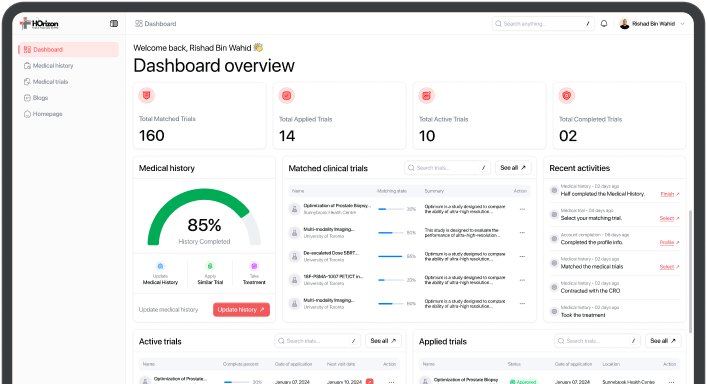A Study of Encorafenib Plus Cetuximab With or Without Chemotherapy in People With Previously Untreated Metastatic Colorectal Cancer
Contact information
Pfizer CT.gov Call Center
Kingston Health Sciences Centre-Kingston General Hospital Site
Kingston, Ontario, Canada, K7L 2V7
Basic information
N/A
N/A Age
815 Enrollment
Trial Details
Brief Summary
The purpose of this study is to evaluate two study medicines (encorafenib plus cetuximab) taken alone or together with standard chemotherapy for the potential treatment of colorectal cancer that: - has spread to other parts of the body (metastatic); - has a certain type of abnormal gene called "BRAF"; and - has not received prior treatment. Participants in this study will receive one of the following study treatments: - Encorafenib plus cetuximab: These participants will receive encorafenib by mouth at home every day and cetuximab once every two weeks by intravenous (IV) infusion (an injection into the vein) at the study clinic. - Encorafenib plus cetuximab with chemotherapy: These participants will receive encorafenib and cetuximab in the way described in the bullet above. Additionally, they will receive standard chemotherapy by IV infusion and oral treatment at home. - Chemotherapy alone: These participants will receive chemotherapy, the standard treatment for this condition, by IV infusion at the study clinics and oral treatment at home. The study team will monitor how each participant responds to the study treatment for up to about 3 years.
Official Title
AN OPEN-LABEL, MULTICENTER, RANDOMIZED PHASE 3 STUDY OF FIRST-LINE ENCORAFENIB PLUS CETUXIMAB WITH OR WITHOUT CHEMOTHERAPY VERSUS STANDARD OF CARE THERAPY WITH A SAFETY LEAD-IN OF ENCORAFENIB AND CETUXIMAB PLUS CHEMOTHERAPY IN PARTICIPANTS WITH METASTATIC BRAF V600E-MUTANT COLORECTAL CANCER
Selection Criteria
Eligibility Inclusion Criteria
-
- Safety Lead-In = Male/female ≥ 18 years old
- Phase 3 and Cohort 3: Male/female ≥ 16 years old (where permitted locally)
- Histologically or cytologically confirmed Stage IV CRC that contains BRAF V600E mutation
- Prior systemic treatment in metastatic setting: 0-1 regimens for Safety Lead In; none for Phase 3 and Cohort 3. (Note: Prior adjuvant or neoadjuvant therapy considered metastatic treatment if relapse/metastasis < 6 month from end of adj/neoadjuvant treatment )
- Measurable disease (Phase 3 and Cohort 3)/ Measurable or evaluable disease (Safety Lead-in)
- ECOG PS 0-1
- Adequate organ function
Eligibility Exclusion Criteria
-
- Tumors that are locally confirmed or unknown MSI-H or dMMR unless participant is ineligible to receive immune checkpoint inhibitors due to a pre-existing medical condition
- Active bacterial or viral infections in 2 weeks prior to starting dosing
- Symptomatic brain metastases
